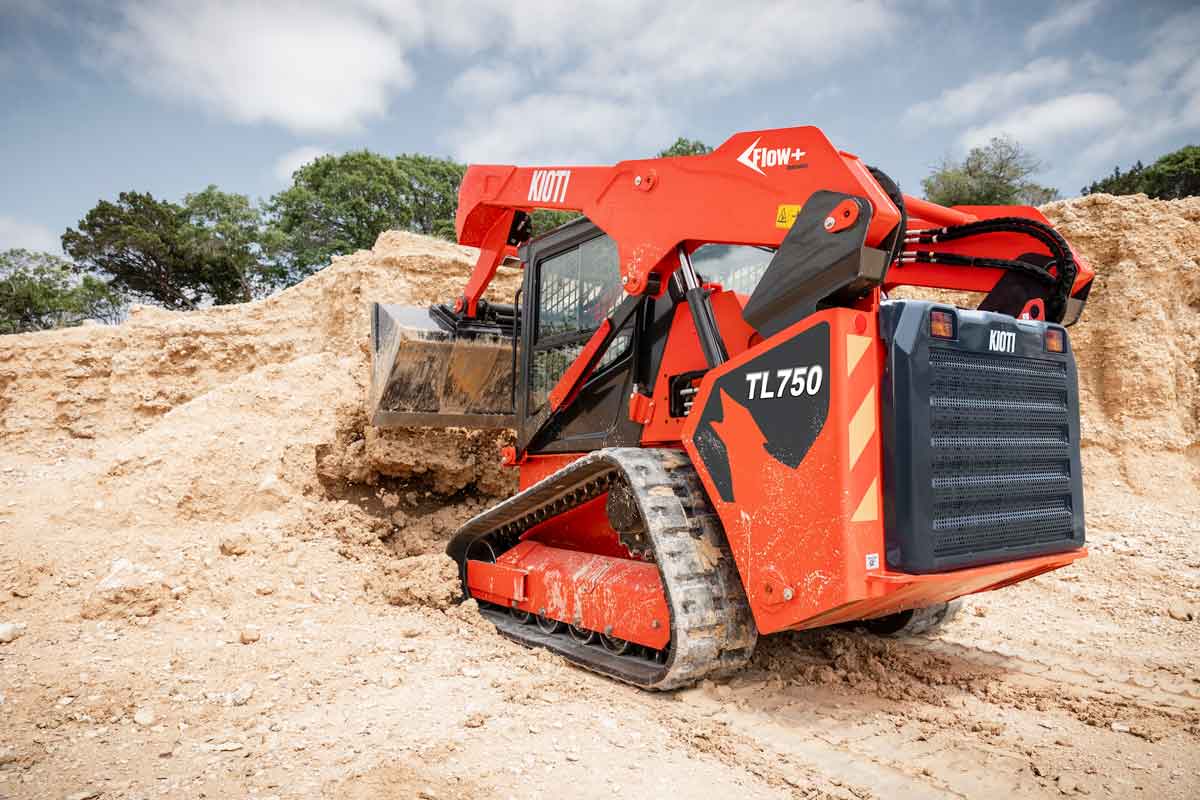JCB Track Loaders — 2015 Spec Guide
Offering a Wide Range of U.S.-Manufactured, Side-Entry Loaders
While JCB entered the skid steer market in 1993, the company didn’t begin producing compact track loaders until 2001. In 2007, JCB launched the Series II skid steer and compact track loader product line. The compact track loaders were built with the same basic design as their skid steer counterparts, with the primary difference being the use of tracks instead of wheels. By the third quarter of 2010, JCB was producing three tracked machines. In November 2010, JCB launched its New Generation product line, which included large-platform skid steers and compact track loaders.
JCB expanded the product line in 2012 with the addition of small-platform skid steers and compact track loaders. In 2013, JCB announced that all large-platform skid steers and compact track loaders would be powered by the Tier 4 Final JCB Ecomax engine, using up to 9 percent less fuel over the previous Dieselmax engine. At CONEXPO 2014, JCB launched its Tier 4 Final small-platform skid steers and compact track loaders. These machines are powered by the all-new JCB diesel by Kohler Tier 4 engines.
Both the large and small platform models meet Tier 4 Final emissions standards without the need for any exhaust gas aftertreatment, saving money on fuel, decreasing downtime and reducing whole-life service costs, says JCB.
Today, JCB’s New Generation product line includes four large-platform tracked models (the 225T, 260T, 300T and 320T) and three small-platform machines (the 150T, 190T and 205T) for a total of seven compact track loaders offering vertical or radial lift. These machines weigh from 1,500 to 3,200 lbs. JCB’s compact track loaders mimic the company’s skid steer loaders, using a single-arm PowerBoom to enhance operator safety and visibility. Visibility that’s 60 percent better than that offered by competing compact track loaders, says JCB. Operators never have to exit or enter the machine over a cumbersome attachment or an unsupported boom due to the presence of a left-side entry door.
JCB compact track loaders share the vast majority of their features with the company’s skid steer models, including larger cabs, suspension seats, servo controls, sealed and pressurized cabs and good serviceability. These machines are not only easy and comfortable to operate, they also present owners with the lowest operating costs in the industry and 16 percent better fuel economy, according to JCB. Because compact track loaders have a lower center of gravity than their wheeled skid steer counterparts, they are generally more stable, making them an excellent choice for operators of all skill levels.
Advice to Buyers
“Buyers should be aware that CTLs require a larger up-front investment than skid steers, and because of their tracks, they also require more maintenance at a slightly higher cost,” says Ashby Graham, JCB North America’s global product manager for skid steers and compact track loaders. “However, a CTL’s utilization rate is higher, which is why more people are purchasing these machines. The productivity gains and the added work you can do with a compact track loader greatly exceed those factors, making the tracked machine a great value. CTLs also often have a higher resale value, giving a buyer an even greater potential return on investment.”






Comments are closed here.